#davidxwiley
Explore tagged Tumblr posts
Photo

A highlight of the Brooklyn Museum’s collection, Kehinde Wiley’s Napoleon Leading the Army Over the Alps was one of four paintings in his Rumors of War series and an early example of his equestrian portraits. In the early 2000s, Wiley quickly became known for replacing subjects in historical paintings with the figures of Black men, literally inserting people who looked like him into the art historical canon. Here, Wiley takes on the military commander Napoleon Bonaparte as painted by Jacques-Louis David. A Black man in contemporary dress assumes the perceived power of Napoleon sitting atop the then-consul’s “spirited steed,” wearing his cloak, and adding his own name—“WILLIAMS”—to the list of military leaders below. Wiley’s painting and his inspiration “met” for the first time late last year in Paris. See them side-by-side in Brooklyn through May 10, 2020.
Posted by Elizabeth Treptow Kehinde Wiley (American, born 1977). Napoleon Leading the Army over the Alps), 2005. Oil on canvas. Brooklyn Museum, Partial gift of Suzi and Andrew Booke Cohen in memory of Ilene R. Booke and in honor of Arnold L. Lehman, Mary Smith Dorward Fund, and William K. Jacobs, Jr. Fund, 2015.53. © Kehinde Wiley
#davidxwiley#kehinde wiley#contemporary#portrait#equestrian portrait#historical paintings#contemporary art#art history#art#artist#bkmcontemporary#napoleon bonaparte#brooklyn#brooklyn museum
153 notes
·
View notes
Photo
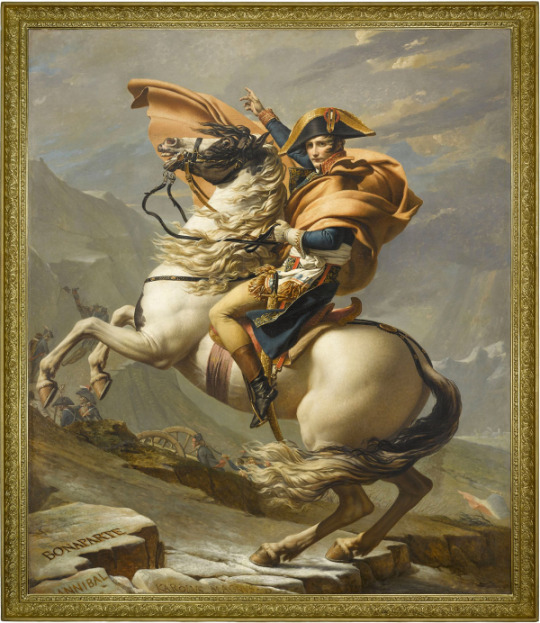

Napoleon Leading the Army over the Alps (2005) Kehinde Wiley
Jacques-Louis David’s Bonaparte Crossing the Alps (1800–1)
8 notes
·
View notes
Photo

🎨#ArtIsAWeapon #BMFirstSaturday #FuturaNoir Celebrate the start of #BlackHistoryMonth and the opening of #DavidxWiley at @brooklynmuseum's First Saturday February 1, 2020, 5:00PM-10:00PM. "Organized in partnership with @theculturelp, the evening ... features @common discussing the importance of mental and physical health in our communities," as well as #music, #art, #film, #poetry and #wellness activities with @topazjones, @nvrsleeping, @briblvck, @healhaus, @__niles, @___niama___, and more. Check out the full lineup at link in bio / www.brooklynmuseum.org Brooklyn Museum 200 Eastern Parkway #BlackArt #BlackArtists #MentalWellness #TraScapades #BlackGirlArtGeeks🤓 #BrooklynMuseum https://www.instagram.com/p/B7_SK5zgQyR/?igshid=1x48tgs8gxz1s
#artisaweapon#bmfirstsaturday#futuranoir#blackhistorymonth#davidxwiley#music#art#film#poetry#wellness#blackart#blackartists#mentalwellness#trascapades#blackgirlartgeeks🤓#brooklynmuseum
0 notes
Photo

Never before seen in New York City, this is the first of five versions of Bonaparte Crossing the Alps, one of Jacques-Louis David’s most famous paintings. It was commissioned by King Charles IV of Spain, but the artist worked closely with Napoleon Bonaparte, then a general and First Consul of France, on this careful piece of propaganda. He asked to be portrayed “calm on a spirited steed,” despite the fact that he crossed the Alps on a donkey in the snow. His fictitiously large size compared to his horse, the soldiers relegated to the background, and the names of historical military heroes inscribed on the rocks along with “BONAPARTE” all serve to communicate his power. Napoleon Bonaparte was so pleased with the outcome that he commissioned a copy for himself.
The painting has come to Brooklyn to be hung alongside Kehinde Wiley’s reinterpretation of the image with its own deliberate message. See them in Jacques-Louis David Meets Kehinde Wiley through May 10.
Posted by Elizabeth Treptow
Jacques-Louis David (French, 1748–1825). Bonaparte Crossing the Alps (Bonaparte franchissant le Grand-Saint-Bernard), 1800–1. Oil on canvas. Collection of Château de Malmaison. (Photo: Courtesy RMN-GP)
#davidxwiley#jacques-louis david#painting#napoleon#napoleon bonaparte#propaganda#donkey#steed#alps#horse#military#heroes#brooklyn#brooklyn museum#nyc#art history
67 notes
·
View notes
Photo


Both Jacques-Louis David and Kehinde Wiley took into account the ways their subjects wanted to be seen. Napoleon Bonaparte expressed a desire to be depicted in complete control of his military passage through the Alps. Over two-hundred years later, Wiley and his model, a man with the last name “Williams,” decided on which historic painting he was to occupy. Wiley then took a series of photos of his model to work from. While we can assume that the face in the painting represents a faithful likeness, Bonaparte, interestingly, did not sit for his portrait, although his military uniform was sent to David’s studio.
See both portraits, side-by-side, in Jacques-Louis David Meets Kehinde Wiley through May 10!
Posted by Elizabeth Treptow Jacques-Louis David (French, 1748-1825). Bonaparte Crossing the Alps (Bonaparte franchissant le Grand-Saint-Bernard) (detail), 1801. Oil on canvas. Collection of Château de Malmaison. (Photo: Courtesy RMN-GP) ⇨ Kehinde Wiley (American, born 1977). Napoleon Leading the Army over the Alps (detail), 2005. Oil on canvas. Brooklyn Museum, Partial gift of Suzi and Andrew Booke Cohen in memory of Ilene R. Booke and in honor of Arnold L. Lehman, Mary Smith Dorward Fund, and William K. Jacobs, Jr. Fund, 2015.53. © Kehinde Wiley
45 notes
·
View notes
Photo

Upcoming 2020 Exhibitions
We’re pleased to announce a selection of upcoming 2020 exhibitions. This winter, we welcome back our iconic Kehinde Wiley painting Napoleon Leading the Army over the Alps (2005), which for the first time at the Brooklyn Museum will be presented in dialogue with its early nineteenth-century source painting, Jacques-Louis David’s Bonaparte Crossing the Alps (1801). We also look at our collection from new perspectives with focused exhibitions that present historical works through a contemporary, multifaceted lens. Out of Place: A Feminist Look at the Collection examines nearly 50 collection works using an intersectional feminist framework. Climate in Crisis: Environmental Change in the Indigenous Americas is an installation of the Museum’s Arts of the Americas collection which reconsiders indigenous art from the perspective of the prolonged and ongoing impact of climate change and colonization. Contemporary artist and MacArthur Fellowship recipient Jeffrey Gibson mines our collection and archives to examine collecting practices and reinterpret historical representations of indigenous communities. We also present African Arts—Global Conversations, a cross-cultural exhibition pairing diverse African works with collection objects made around the world, and Striking Power: Iconoclasm in Ancient Egypt, which examines the damage to sculptures and reliefs in ancient Egypt as a way of also exploring twenty-first-century concerns and struggles over public monuments and the destruction of antiquities.
In March, we celebrate the iconic history and trailblazing aesthetics of Studio 54 in a special exhibition featuring never-before-seen archival materials, video, photography, fashion, and more. We will also present the first solo museum exhibition dedicated to Brooklyn-based photographer John Edmonds, winner of our inaugural UOVO Prize for an emerging Brooklyn artist. And in the fall of 2020, we are proud to mount the first career retrospective of the work of Lorraine O’Grady, one of the most significant figures in contemporary performance, conceptual, and feminist art.
“We’re thrilled to present a roster of exhibitions next season that are in conversation with our collection in fresh and exciting ways,” says Anne Pasternak, Shelby White and Leon Levy Director, Brooklyn Museum. “As an encyclopedic museum, we’re always looking for new ways to examine our collection and open it up to include narratives that have historically been left out of the canon. In 2020, we’re committed to exhibitions that do just that: telling stories that are rarely told, through the eyes of contemporary artists.”

Jacques-Louis David Meets Kehinde Wiley January 24–May 10, 2020 Morris A. and Meyer Schapiro Wing, 4th Floor
This exhibition brings an iconic painting from our collection—Kehinde Wiley’s Napoleon Leading the Army over the Alps (2005)—into dialogue with its early nineteenth-century source painting, Jacques-Louis David’s Bonaparte Crossing the Alps (1801). The two paintings, displayed together for the very first time, are on view in consecutive exhibitions at the Château de Malmaison from October 9, 2019, to January 6, 2020, and at the Brooklyn Museum from January 24 to May 10, 2020. This focused exhibition questions how ideas of race, masculinity, representation, power, heroics, and agency play out within the realm of portraiture. The presentation at the Brooklyn Museum is the first time David’s painting is on view in New York, and Wiley marks this momentous occasion by consulting on the exhibition design. It includes videos incorporating Wiley’s perspectives on how the Western canon, French portrait tradition, and legacies of colonialism influence his own practice. The exhibition represents an intimate conversation between two key artists of the nineteenth and twenty-first centuries and illuminates how images construct history, convey notions of power and leadership, and create icons.
The exhibition is organized by the Brooklyn Museum and Musée national des châteaux de Malmaison and Bois-Préau. The Brooklyn presentation is curated by Lisa Small, Senior Curator, European Art, and Eugenie Tsai, John and Barbara Vogelstein Senior Curator, Contemporary Art, Brooklyn Museum.

Out of Place: A Feminist Look at the Collection January 24–September 13, 2020 Elizabeth A. Sackler Center for Feminist Art, 4th Floor
This exhibition presents more than 50 works from across our collections. Following the 2018 exhibition Half the Picture: A Feminist Look at the Collection, Out of Place also explores collection works anew through an intersectional feminist framework. Out of Place features more than forty artists from remarkably different contexts whose unconventional materials and approaches call for a broader and more dynamic understanding of modern and contemporary art.
Examining how contexts change the way we see art, Out of Place: A Feminist Look at the Collection showcases artists who have traditionally been seen as “out of place” in most major collecting museums. The exhibition is organized around three distinct cultural contexts for making and understanding creativity—museums and art spaces, place-based practices, and the domestic sphere—and explores significant histories that have been, until recently, overlooked and undervalued, despite their influence outside of the mainstream. Out of Place traces how cultural institutions are challenged and changed by the ways artists work. Over half of the works in the exhibition are on view for the very first time, including important collection objects as well as significant new acquisitions, such as highlights from the recent Souls Grown Deep Foundation Gift of works by Black artists of the American South.
Artists featured include Louise Bourgeois, Beverly Buchanan, Chryssa, Thornton Dial, Helen Frankenthaler, Lourdes Grobet, Louise Nevelson, Dorothea Rockburne, Betye Saar, Miriam Schapiro, Judith Scott, Joan Snyder, and May Wilson, among others.
Out of Place: A Feminist Look at the Collection is curated by Catherine Morris, Senior Curator for the Elizabeth A. Sackler Center for Feminist Art, and Carmen Hermo, Associate Curator, Elizabeth A. Sackler Center for Feminist Art. Generous support for this exhibition is provided by the Helene Zucker Seeman Memorial Exhibition Fund.

Jeffrey Gibson: When Fire Is Applied to a Stone It Cracks February 14, 2020–January 10, 2021 Arts of the Americas Galleries, 5th Floor
This exhibition presents new and existing work by artist Jeffrey Gibson alongside a selection from our extensive collection and archives. Gibson collaborated with historian Christian Crouch to organize this exhibition that examines nineteenth- and early twentieth-century museum collecting practices, and the historical representations of indigenous communities, through a contemporary lens.
Gibson, an artist of Choctaw and Cherokee descent, often incorporates elements of Native American art and craft into his practice. He regards these aesthetic and material histories as modern, innovative, global, and hybrid. The presentation includes collection objects such as moccasins, headdresses, ceramics, and parfleche, and examples of beadwork and appliqué, displayed alongside Gibson’s contemporary works, which take material and formal inspiration from these traditional artistic practices. The exhibition also includes rarely exhibited items from our archives that shed light on the formation of the Brooklyn Museum’s Native American collection in the early twentieth century by curator Stewart Culin. The archival selections by Gibson and Crouch aim to return the focus to the indigenous individuals represented within the archives, recovering those individuals’ previously overlooked narratives and presence.
By presenting his own work alongside key selections from our collection, Gibson offers a different perspective on historical objects within a museum setting—one that is not static or stuck in the past, but ever evolving and modern. He encourages visitors to question long-held categorizations and representations of Native American art and challenges our understanding of tradition, practice, craftsmanship, and art-making.
Jeffrey Gibson: When Fire Is Applied to a Stone It Cracks is organized by Jeffrey Gibson and Christian Crouch, Curatorial Advisor, with Eugenie Tsai, John and Barbara Vogelstein Senior Curator, Contemporary Art, and Erika Umali, Mellon Curatorial Fellow, with support from Nancy Rosoff, Andrew W. Mellon Senior Curator, Arts of the Americas, and Molly Seegers, Museum Archivist, Brooklyn Museum. Major support for this exhibition is provided by Ellen and William Taubman. Generous support is provided by the Brooklyn Museum’s Contemporary Art Committee, the FUNd, and Stephanie and Tim Ingrassia.
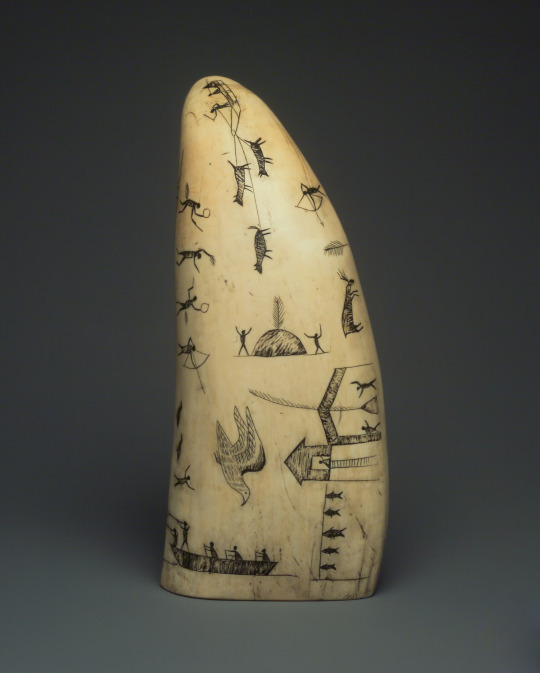
Climate in Crisis: Environmental Change in the Indigenous Americas February 14, 2020–January 10, 2021 Arts of the Americas Galleries, 5th Floor
Climate change is having a severe impact on indigenous communities across the Americas, but this situation has an even longer history. The European conquest and colonization of the Americas beginning in the sixteenth century introduced ways of using and exploiting natural resources that clashed with indigenous ways of understanding and relating to the natural world. This exhibition draws upon the strength of our renowned collection to highlight indigenous worldviews about the environment, and the ongoing threat of ecological destruction.
The installation includes work spanning 2,800 years, and explores how indigenous beliefs, practices, and ways of living are impacted by the climate crisis, ranging from the effects of melting sea ice and overfishing for Native peoples of the Arctic and Pacific Northwest to illegal logging and deforestation for indigenous communities in the Amazon. This environmental perspective reveals the fundamental disparities between the misuse of natural resources over the past five hundred years and indigenous communities’ profound relationships with their ancestral homelands. In addition, the exhibition incorporates voices of contemporary indigenous activists to underscore the work being done today to counter the climate crisis and protect the planet.
Climate in Crisis: Environmental Change in the Indigenous Americas is curated by Nancy Rosoff, Andrew W. Mellon Senior Curator, Arts of the Americas, with Joseph Shaikewitz and Shea Spiller, Curatorial Assistants, Arts of the Americas and Europe.

African Arts—Global Conversations February 14–November 15, 2020 Lobby Gallery, 1st Floor, and collection galleries on the 2nd, 3rd, and 5th Floors
African Arts—Global Conversations seeks to bring African arts into broader, deeper, and more meaningful and critical conversations about the ways that art history and encyclopedic museums have or have not included African artworks. It is the first exhibition of its kind to take a transcultural approach pairing diverse African works across mediums with objects made around the world―all drawn from our collection. It puts African and non-African arts from distinct places and time periods in dialogue with each other in an introductory gallery, as well as in “activation spaces” in the galleries dedicated to European Art, Arts of the Americas, American Art, Ancient Egyptian Art, and Arts of Asia. Duos, trios, and other groupings of objects from a wide variety of locations worldwide prompt conversations about history, art, race, power, design, and more. Approximately 33 artworks are presented (including 20 by African artists), as well as a selection of historical books. Highlights include the celebrated eighteenth-century sculpture of a Kuba ruler, a selection of fourteenth- to sixteenth-century Ethiopian Orthodox processional crosses, and a midtwentieth-century mask from Sierra Leone’s Ordehlay (Ode-Lay) society. Also on view are works by contemporary artists Atta Kwami, Ranti Bam, Magdalene Odundo OBE, and Taiye Idahor.
African Arts—Global Conversations is curated by Kristen Windmuller-Luna, Sills Family Consulting Curator, African Arts, Brooklyn Museum.

Studio 54: Night Magic March 13–July 5, 2020 Morris A. and Meyer Schapiro Wing and Iris and B. Gerald Cantor Gallery, 5th Floor
Studio 54: Night Magic is the first exhibition to trace the groundbreaking aesthetics and social politics of the historic nightclub, and its lasting influence on nightclub design, cinema, and fashion. Though it was open for only three years—from April 26, 1977, to February 2, 1980—Studio 54 was arguably the most iconic nightclub to emerge in the twentieth century. Set in a former opera house in Midtown Manhattan, with the stage innovatively re-envisioned as a dance floor, Studio 54 became a space of sexual, gender, and creative liberation, where every patron could feel like a star. From the moment Studio 54 opened, its cutting-edge décor and state-of-the-art sound and lighting systems set it apart from other clubs at the time, attracting artists, fashion designers, musicians, and celebrities whose visits were vividly chronicled by notable photographers. In addition to presenting the photography and media that brought Studio 54 to global fame, the exhibition conveys the excitement of Manhattan’s storied disco club with more than 600 objects ranging from fashion design, drawings, paintings, film, and music to décor and extensive archives.
Studio 54: Night Magic is curated and designed by Matthew Yokobosky, Senior Curator of Fashion and Material Culture, Brooklyn Museum. Lead sponsorship for this exhibition is provided by Spotify.

John Edmonds: A Sidelong Glance May 1, 2020–February 7, 2021 Stephanie and Tim Ingrassia Gallery of Contemporary Art, 4th Floor
John Edmonds is the first winner of the UOVO Prize, a new annual award for an emerging artist living or working in Brooklyn. This is Edmonds’s first solo museum exhibition and features approximately 25 new and recent photographic works that include portraiture and still lifes of Central and West African sculptures. Best known for his sensitive depictions of young Black men, Edmonds uses photography and video to create formal pictures that challenge art historical precedents and center Black queer desire. He often uses a large-format camera to heighten the staging of his subjects and explore their sculptural potential, making reference to religious paintings and modernist photography. Highlighting markers of Black self-fashioning and community— hoodies, du-rags, and more recently, African sculptures— Edmonds’s works point to individual style and a shared visual language across time.
John Edmonds: A Sidelong Glance is curated by Ashley James, former Assistant Curator, Contemporary Art, and Drew Sawyer, Phillip Leonian and Edith Rosenbaum Leonian Curator, Photography, Brooklyn Museum. Leadership support for the UOVO Prize is provided by UOVO.
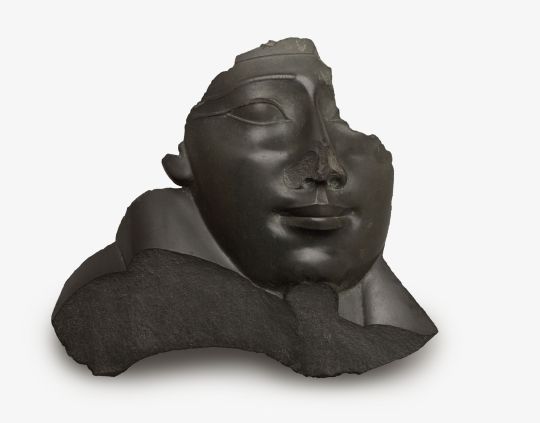
Striking Power: Iconoclasm in Ancient Egypt Opening May 22, 2020 Egyptian Galleries, 3rd Floor
This exhibition, which draws from our renowned Egyptian collection, seeks to establish a context for considering contemporary concerns and struggles over public monuments and damage to antiquities. Striking Power: Iconoclasm in Ancient Egypt explores patterns of organized campaigns of destruction to sculptures and reliefs motivated by shifting ideologies, politics, and crime in ancient Egypt, over a 2,500-year period. Presenting approximately 60 whole and damaged masterpieces of Egyptian art, the exhibition explores the damage that occurred during and after the rule of Pharaohs, with particular focus on the contested reigns of Hatshepsut (circa 1478–1458 B.C.E.) and Akhenaten (circa 1353–1336 B.C.E.). Targeted damage to sculptures typically occurred around a figure’s nose, which ancient Egyptians believed would remove the sculpture’s supernatural ability to breathe and therefore prevent the deceased figure from interacting with the human world. The exhibition explores the notion of public approval of iconoclasm and poses the question, who has the power to bring down or destroy images? Opinions about iconoclasm hinge on questions of whose narrative dominates public space. Many of the same questions about public art that concern the contemporary world, such as the role that U.S. Confederate monuments should play in today’s publically shared spaces, are illuminated through the lens of ancient iconoclasm.
Striking Power: Iconoclasm in Ancient Egypt is organized in collaboration with the Pulitzer Arts Foundation and is curated by Edward Bleiberg, Senior Curator of Egyptian, Classical, and Ancient Near Eastern Art, Brooklyn Museum.

Lorraine O’Grady: Both/And November 20, 2020–April 11, 2021 Elizabeth A. Sackler Center for Feminist Art, 4th Floor
Lorraine O’Grady: Both/And is the first comprehensive retrospective of one of the most significant figures in contemporary performance, conceptual, and feminist art. For four decades, from the anger and hilarity of the early guerrilla performance Mademoiselle Bourgeoise Noire, to the joy and complexity of Art Is… on Harlem’s streets, to the haunting alternations in her single-channel video Landscape (Western Hemisphere), O’Grady has delved fearlessly into a range of timely questions: Black subjectivity (especially Black female subjectivity), diaspora, hybridity, art’s guiding concepts and institutions (from modernism to the museum), and the intersection of self and history. By putting contradictory ideas into play—black and white, self and other, here and there, West and non-West, past and present—and allowing them to interact with each other without expecting a concrete resolution, O’Grady’s work aims to replace the dualistic, “either/or” of Western thought with a productive, open-ended “both/and.” The urgency of the ideas she explores is perhaps the reason that her work is being newly embraced by a younger generation of artists who find much to learn from a practice that upends the fixed positions of power that structure our culture—while bringing into focus the poignancy of the lives that have been lived within these frameworks.
The exhibition includes twelve of the artist’s fourteen major projects, accompanied by a selection of material from her rich archive. It is accompanied by a catalogue documenting the full span of O’Grady’s artistic career, the first publication to do so, with essays by Malik Gaines, Harry Burke, Zoe Whitley, Catherine Morris, and Aruna D’Souza, along with a conversation between O’Grady and Catherine Lord.
Lorraine O’Grady: Both/And is organized by Catherine Morris, Senior Curator for the Elizabeth A. Sackler Center for Feminist Art, Brooklyn Museum, and writer Aruna D’Souza. Leadership support for this exhibition is provided by The Kaleta A. Doolin Foundation. Major support is provided by the Elizabeth A. Sackler Museum Educational Trust. Generous support is provided by Shelley Fox Aarons and Philip Aarons.
We hope to see you at the Museum soon!
Illustrated, from top:
Rose Hartman (American, born 1937). Bianca Jagger Celebrating her Birthday, Studio 54, 1977. Black and white photograph. Courtesy of the artist. © Rose Hartman
Kehinde Wiley (American, born 1977). Napoleon Leading the Army over the Alps, 2005. Oil on canvas. Brooklyn Museum, Partial gift of Suzi and Andrew Booke Cohen in memory of Ilene R. Booke and in honor of Arnold L. Lehman, Mary Smith Dorward Fund, and William K. Jacobs, Jr. Fund, 2015.53. © Kehinde Wiley. (Photo: Brooklyn Museum)
Lourdes Grobet (born Mexico City, Mexico, 1940). Untitled, from the series Painted Landscapes, circa 1982. Silver dye bleach photograph. Brooklyn Museum; Gift of Marcuse Pfeifer, 1990.119.12. © Maria de Lourdes Grobet. (Photo: Brooklyn Museum)
Jeffrey Gibson (American, born 1972). WHEN FIRE IS APPLIED TO A STONE IT CRACKS, 2019. Acrylic on canvas, glass beads and artificial sinew inset into custom wood frame. Courtesy of the artist and Kavi Gupta, Chicago. © Jeffrey Gibson. (Photo: John Lusis)
Eskimo artist. Engraved Whale Tooth, late 19th century. Sperm whale tooth, black ash or graphite, oil. Brooklyn Museum; Gift of Robert B. Woodward, 20.895. Creative Commons-BY. (Photo: Brooklyn Museum)
Kuba artist. Mask (Mwaash aMbooy), late 19th or early 20th century. Rawhide, paint, plant fibers, textile, cowrie shells, glass, wood, monkey pelt, feathers. Brooklyn Museum; Robert B. Woodward Memorial Fund, 22.1582. (Photo: Brooklyn Museum)
Guy Marineau (French, born 1947). Pat Cleveland on the dance floor during Halston's disco bash at Studio 54, 1977. (Photo: Guy Marineau / WWD / Shutterstock)
John Edmonds (American, born 1989). Two Spirits, 2019. Archival pigment photograph. Courtesy of the artist and Company, New York. © John Edmonds
Face and Shoulder from an Anthropoid Sarcophagus, 332–30 B.C.E. Black basalt. Brooklyn Museum; Charles Edwin Wilbour Fund, 37.1516E. (Photo: Brooklyn Museum)
Lorraine O'Grady (American, born 1934). Rivers, First Draft: The Woman in the White Kitchen tastes her coconut, 1982/2015. Digital chromogenic print from Kodachrome 35mm slides in 48 parts. Courtesy Alexander Gray Associates, New York. © Lorraine O’Grady/Artists Rights Society (ARS), New York
#brooklyn#studio54bkm#studio54#Kehinde Wiley#DavidxWiley#feminist art#jeffrey gibson#globalconversations#climate change#indigeneous art#native american#native american art#african arts#bkmafricanarts#john edmonds#bkmegyptianart#egyptian art#lorraine o'grady#brooklyn museum#museums#nyc#art#exhibitions
78 notes
·
View notes
Photo




Small objects like commemorative medals were an important way to quickly disseminate a propagandistic image to the public. Napoleon Bonaparte looked to history for ways to communicate his power. In an allegory of the Cisalpine Republic—a country that Napoleon created out of a few regions of northern Italy that he conquered on behalf of France—Napoleon appears as the Greco-Roman deity Hercules helping a personification of Italy to her feet. To commemorate an alliance with Saxony, Napoleon aligned himself with Charlemagne, a Frankish king who created the first empire in Europe since Rome. The opposite side of this medal aligns Frederick Augustus I, who Napoleon installed as king of Saxony, and Widukind, the Saxon leader who submitted to Charlemagne.
Posted by Elizabeth Treptow Medal (Front and Back). Brooklyn Museum, Bequest of Dr. Marion Reilly, 29.190.11. Creative Commons-BY ⇨ Creative Commons-BY Medal (Front and Back). Brooklyn Museum, Bequest of Dr. Marion Reilly, 29.190.8. Creative Commons-BY
#Davidxwiley#napoleon#medals#propaganda#napoleon bonaparte#history#power#allegory#france#cisalpine republic#greco-roman#deity#hercules#italy#roman#empire#europe#frederick augustus I#saxony#widukind#charlemagne#art#bkmdecarts#brooklyn museum
40 notes
·
View notes
Photo


Today Kehinde Wiley’s triumphant Napoleon Leading the Army over the Alps (2005), comes home to Brooklyn with its nineteen-century source, Jacques-Louis David’s Bonaparte Crossing the Alps (1800–1). Seen together, the works by David and Wiley reveal how race, masculinity, power, and representation layer onto portraiture and shape the writing of history.
See Jacques-Louis David Meets Kehinde Wiley now through May 10, 2020!
Kehinde Wiley (American, born 1977). Napoleon Leading the Army over the Alps (detail), 2005. Oil on canvas. Brooklyn Museum, Partial gift of Suzi and Andrew Booke Cohen in memory of Ilene R. Booke and in honor of Arnold L. Lehman, Mary Smith Dorward Fund, and William K. Jacobs, Jr. Fund, 2015.53. © Kehinde Wiley ⇨ Jacques-Louis David (French, 1748-1825). Bonaparte Crossing the Alps (Bonaparte franchissant le Grand-Saint-Bernard) (detail), 1801. Oil on canvas. Collection of Château de Malmaison. (Photo: Courtesy RMN-GP)
59 notes
·
View notes
Photo

Napoleon Bonaparte was born on Corsica in 1769, the same year that the once independent island was conquered by France. He parlayed his modest birthright into an illustrious military career in France rocketing through the ranks to become a general at the age of 24. Considered one of the most ambitious men in the modern era, Napoleon took advantage of a power vacuum in the wake of the tumultuous French Revolution to name himself First Consul and later emperor, as we see him here. Propagandistic images asserted his power. The crown of laurels connect him to ancient Rome. The bees on his cloak connect him to the earliest kings of France, the Merovingians, while at the same time replacing the fleur-de-lys that reminded too many of the recently deposed Bourbon kings.
Posted by Elizabeth Treptow Rafaello Morghen (Italian, 1758-1833) after Stephano Tofanelli (Italian, 1752-1812) Napoleon. Engraving on wove paper. Brooklyn Museum, Bequest of Marion Reilly, 29.96
#davidxwiley#rafaello morghen#napoleon bonaparte#corsica#france#history#art#art history#military#career#french revolution#brooklyn museum
27 notes
·
View notes
Photo
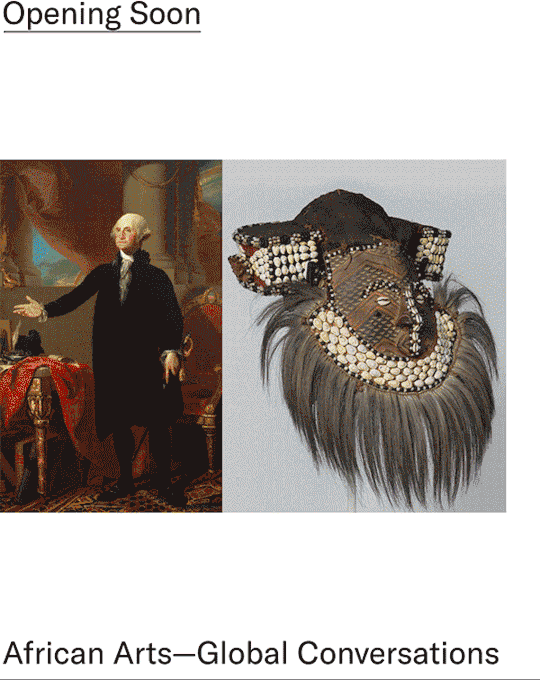
Our 2020 exhibition season kicks off on January 24 with Kehinde Wiley's triumphant painting in conversation with its source image and a presentation of forty-four artists whose unconventional materials and approaches challenge traditional museum spaces. The whole season comes together on February 14 with three more exhibitions: one featuring recent work by Jeffrey Gibson alongside our collection of Native American art, another presenting artworks that investigate the ongoing environmental crisis for indigenous communities, and finally a transcultural approach pairing African arts with objects from around the world.
Discover our upcoming exhibitions at http://bit.ly/2NrsKQ.
#DavidxWiley#outofplacebkm#bkmafricanarts#bkmartsoftheamericas#Kehinde Wiley#jeffrey gibson#african arts#native american art#climate change#brooklyn museum#museum#art#brooklyn#nyc#art museum#globalconversations
28 notes
·
View notes
Photo









LAST CHANCE! Stop by this weekend to see #KehindeWiley's Napoleon Leading the Army over the Alps before it's off to Château de Malmaison. The #bkmcontemporary painting will return on January 24 in #DavidxWiley with its 19th-century source image of Napoleon Bonaparte by Jacques-Louis David. Tag your photos with #mybkm for a chance to be featured next!
Photos by recent visitors @jhobemusic @andersonbenjamim @cabinet48 @theartofjumping @_laurenlovesyew @brownskinhazel @ajahnablaze @lailalake90 @lukuscrazed
#mybkm#kehinde wiley#bkmcontemporary#davidxwiley#jacques louis david#contemporaryart#brooklyn#brooklyn museum#visitors
80 notes
·
View notes
Photo
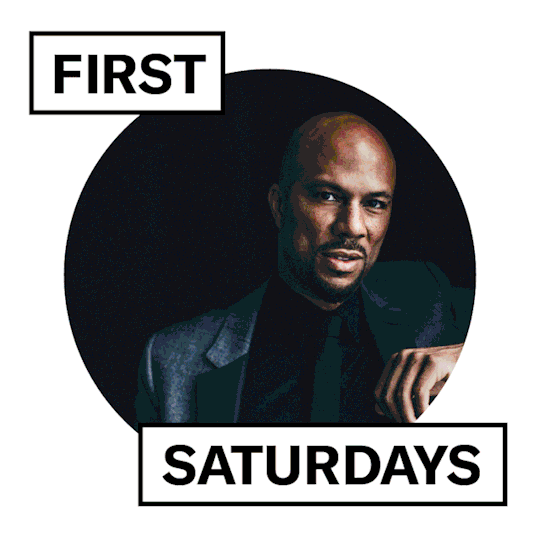
Celebrate Black History Month and the opening of Jacques-Louis David Meets Kehinde Wiley at this weekend’s First Saturday. Organized in partnership with The Culture LP, the evening of joy features Common discussing the importance of mental and physical health in our communities, as well as activations by Topaz Jones, NVRSLEEP WORLDWIDE, Bri Blvck, HealHaus, Niles Luther, Niama Safia Sandy, and more!
+ Starting at 5 pm, visitors should enter through the front of the Museum. Please keep in mind that there could be lines for entry, which may be limited once we reach maximum capacity.
#firstsaturdaysbkm#black history month#davidxwiley#brooklyn museum#brooklyn#first saturdays#nyc#film#performance#music#artists#makers#common
7 notes
·
View notes
Photo

There's only one month left to see Kehinde Wiley's Napoleon Leading the Army over the Alps on view in our lobby before it's off to château de Malmaison. Luckily it won't be gone for too long! This beloved contemporary painting will return on January 24 with its nineteenth-century source image of Napoleon Bonaparte by Jacques-Louis David.
Tag your photos with #mybkm for a chance to be featured next! Pic shared by recent visitor @shopwitme95
#DavidxWiley#Kehinde Wiley#bkmcontemporary#french painting#jacques-louis david#château de Malmaison#french art
61 notes
·
View notes
Photo

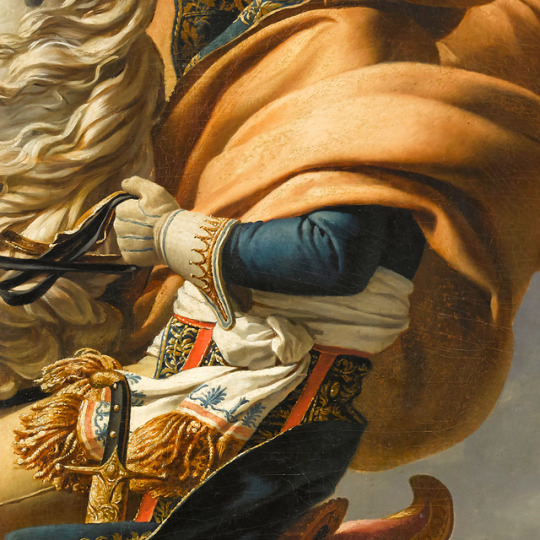
Opening January 24, 2020, Kehinde Wiley’s triumphant Napoleon Leading the Army over the Alps, a hallmark of our collection, comes face to face with the nineteenth-century painting on which it is based: Jacques-Louis David’s Bonaparte Crossing the Alps. The two paintings, displayed in dialogue for the very first time, will open at Château de Malmaison on October 9, 2019 before traveling to Brooklyn in 2020.
Kehinde Wiley (American, born 1977). Napoleon Leading the Army over the Alps (detail), 2005. Oil on canvas. Brooklyn Museum, Partial gift of Suzi and Andrew Booke Cohen in memory of Ilene R. Booke and in honor of Arnold L. Lehman, Mary Smith Dorward Fund, and William K. Jacobs, Jr. Fund, 2015.53. © Kehinde Wiley ⇨ Jacques-Louis David (French, 1748-1825). Bonaparte Crossing the Alps (Bonaparte franchissant le Grand-Saint-Bernard) (detail), 1801. Oil on canvas. Collection of Château de Malmaison. (Photo: Courtesy RMN-GP)⠀
#davidxwiley#kehinde wiley#jacques-louis david#napoleon#painting#art#artists#art history#alps#napoleon crossing the alps#napoleon boneparte#Château de Malmaison#france#contemporary art#european art#french#brooklyn museum#bkmcontemporary
61 notes
·
View notes
Photo

Upcoming Shows Through January 2020
We’re pleased to announce our advance schedule of exhibitions through January 2020, including a retrospective featuring the futurist fashion of Pierre Cardin; a solo presentation of work by internationally recognized artist JR; and the reinstallation of the Museum's Arts of Japan and China collections. In addition, and in collaboration with the Château de Malmaiso, France, in January 2020 the iconic Kehinde Wiley painting from the Brooklyn Museum's collection—Napoleon Leading the Army over the Alps (2005)—will be on view in dialogue with its early nineteenth-century source painting, Jacques-Louis David's Napoleon Crossing the Alps (1800-1801).
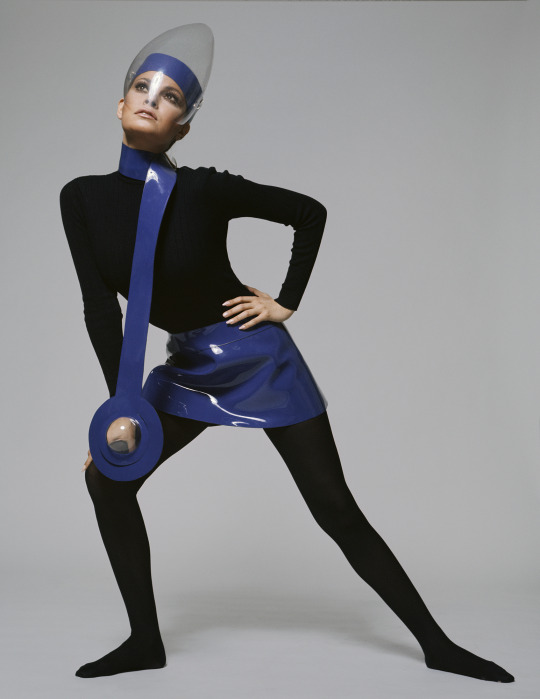
Pierre Cardin: Future Fashion
July 20, 2019-January 5, 2020 Morris A. and Meyer Schapiro Wing and Iris and B. Gerald Cantory Gallery, 5th Floor
The retrospective exhibition Pierre Cardin: Future Fashion traces the legendary career of one of the fashion world's most innovative designers, one whose futuristic designs and trailblazing efforts to democratize high fashion for the masses pushed the boundaries of the industry for more than seven decades. Featuring over 170 objects that date from the 1950s to the present, the exhibition includes haute couture and ready-to-wear garments, accessories, photographs, film, and other materials drawn primarily from the Pierre Cardin archive. Highlights range across rare designs in luxury fabrics from the 1950s; a large grouping from the landmark 1964 "Cosmocorps" collection; creations that incorporate vinyls, plastics, and the self-named "Cardine" synthetic fabric; signature unisex ensembles featuring full knit bodysuits with layered skirts, vests, bibs, and jewelry; iconic broad-shouldered jackets from the 1980s based on Japanese origami, Chinese architecture, and American football uniforms; "illuminated" jumpsuits and dresses; and an extensive overview of Cardin's recently designed couture menswear and eveningwear. The exhibition reveals how the designer's bold, futuristic aesthetic had a pervasive influence not only on fashion, but on other forms of design that extended beyond clothing to furniture, industrial design, and more.
Pierre Cardin: Future Fashion is curated and designed by Matthew Yokobosky, Senior Curator of Fashion and Material Culture, Brooklyn Museum. Leadership support for this exhibition is provided by Chargeurs.
Terry O'Neill (British, born 1938). Raquel Welch in a Pierre Cardin outfit featuring a miniskirt and necklace in blue vinyl, worn with a Plexiglas visor, 1970. Image courtesy of Iconic Images. © Terry O'Neill / Iconic Images

JR: Chronicles October 4, 2019-May 3, 2020 Great Hall, 1st Floor
We’re pleased to present JR: Chronicles, the French artist's largest solo museum exhibition to date. The presentation covers nearly 20,000 square feet of our Great Hall and traces JR's artistic evolution since 2001, focusing on his commitment to community and civic discourse through the use of large-scale media such as news and advertising as well as architectural interventions. Working at the intersections of photography, social practice, and street art, JR's participatory projects have fostered collaborations and conversations around the globe. The exhibition centers on The Chronicles of New York City, a new monumental mural incorporating the portraits and stories of over one thousand New Yorkers. The immersive installation also features JR's most well-known works across photography, installation, film, and video from the past fifteen years, including his first major collaborative project, Portrait of a Generation (2004-6); Face 2 Face (2007), which features giant portrait diptychs of Israelis and Palestinians, face to face, in eight Palestinian and Israeli cities; Women Are Heroes (2008-9), featuring images of the eyes of women gazing back at their communities in numerous countries, including Brazil, India, and Kenya; the global participatory art project Inside Out (2011-ongoing); and The Gun Chronicles: A Story of America (2018), a video mural that gives a face to the full and complex spectrum of views on guns in the United States.
JR: Chronicles is curated by Sharon Matt Atkins, Director of Curatorial Affairs, and Drew Sawyer, Phillip Leonian and Edith Rosenbaum Leonian Curator, Photography, Brooklyn Museum.
JR (French, born 1983). The Chronicles of New York City (detail), 2018-19. Dimensions variable. © JR-ART.NET

Arts of China Opens October 25, 2019 Arts of Asia and the Middle East, 2nd Floor
Our comprehensive collection of Chinese art spans more than five thousand years of Chinese artistic accomplishment, and boasts a diversity of art forms including jades, bronzes, lacquer, sculpture, painting, and calligraphy. This fall, we open our newly reinstalled galleries for our renowned Arts of China collection, featuring recent acquisitions, new commissions, and rarely seen historical treasures. Our large collection of cloisonné enamels, many from the Chinese imperial collection, are featured, along with masterpieces of bronze such as a Shang dynasty ritual vessel (gong) and a Han dynasty goose. Also on view are a selection of ceramics, including our world-famous Yuan dynasty Wine Jar with Fish and Aquatic Plants, widely acknowledged to be one of the finest blue-and-white porcelains in the Western hemisphere. Since 2014, we have worked to expand our holdings of contemporary painting and sculpture by Chinese artists, culminating in the acquisition of over fifty works from the twentieth and twenty-first centuries, including new commissions that spark dialogue with objects from our historical collection. Highlights include experimental ink painting by Sun Xun, Zheng Chongbin, Tai Xiangzhou, Zhang Jian-Jun, Bingyi, Peng Wei, and others.
Arts of China is curated by Susan L. Beningson, Assistant Curator, Asian Art, Brooklyn Museum.
Wine Jar with Fish and Aquatic Plants. China. Yuan dynasty, 1279-1368. Porcelain with underglaze cobalt blue decoration, 111 5/16 x 13 3/4 in. (30.3 x 34.9 cm). Brooklyn Museum, The William E. Hutchins Collection, Bequest of Augustus S. Hutchins, 52.87.1. (Photo: Brooklyn Museum)
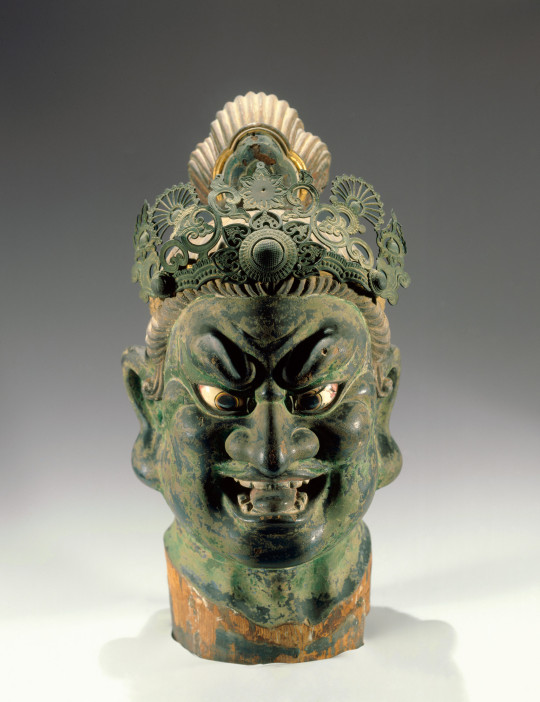
Arts of Japan Opens October 25, 2019 Arts of Asia and the Middle East, 2nd Floor
This fall, we unveil a new gallery for our Arts of Japan collection following a multiyear renovation. In this inaugural installation, seventy objects from our collection illustrate the sophistication of Japanese art-making technologies and explore the dialogue between tradition and innovation in Japan. Featuring masterworks of Buddhist sculpture, vivid Ukiyo-e prints, exquisite screen paintings, and cutting-edge contemporary ceramics, the gallery highlights two thousand years of artistic achievement. In acknowledgement of the cultural diversity within the region, the installation also includes highlights from our important collection of artifacts from the Ainu people of northern Japan, material that is rarely shown in an art museum setting
Arts of Japan is curated by Joan Cummins, Lisa and Bernard Selz Senior Curator, Asian Art, Brooklyn Museum.
Head of Guardian. Japan. Kamakura period (1185-1333), 13th century. Hinoki wood with polychrome, inlaid rock crystal eyes, filigree metal crown, 22 1/16 x 10 1/4 x 13 15/16 in. (56 x 26 x 35.4 cm). Brooklyn Museum, Gift of Mr. and Mrs. Alastair B. Martin, the Guennol Collection, 86.21. (Photo: Brooklyn Museum)
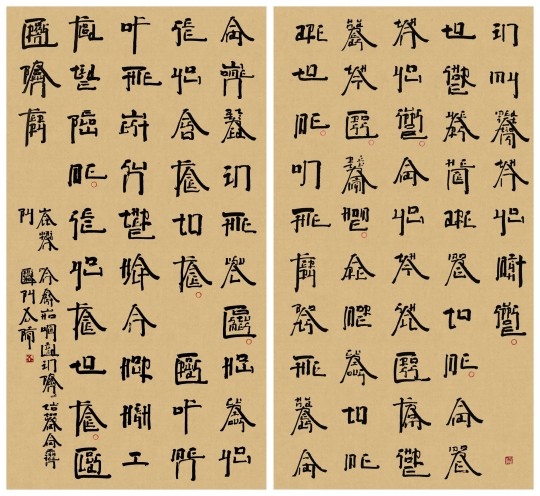
One: Xu Bing October 25, 2019-April 26, 2020 Focus Gallery, 2nd Floor
Focusing on a major new gift to our world-renowned collection of Chinese art, One: Xu Bing highlights the painting Square Word Calligraphy: Crossing Brooklyn Ferry, Walt Whitman (2018). Created specifically for the Brooklyn Museum in consultation with curator Susan L. Beningson, this painting by one of China's most important living artists celebrates Xu Bing's close relationship with Brooklyn, where he lived in the 1990s and still has a studio today. Square Word Calligraphy: Crossing Brooklyn Ferry, Walt Whitman pays homage to Walt Whitman, the famous American poet, who served as an early librarian at the Brooklyn Apprentices' Library Association (our predecessor). His now-iconic poem "Crossing Brooklyn Ferry" is part of his collection Leaves of Grass and celebrates the idea that all of us are united in our shared human experience. 2019 marks Whitman's 200th birthday, and this exhibition includes material from our Archives to celebrate his relationship to the Museum.
Xu Bing (b. 1955) developed Square Word Calligraphy as a new way of rendering the English language after he came to New York in the early 1990s. The hybrid calligraphy incorporates English words in rectangular arrangements that resemble Chinese characters. This interplay between form and language reflects Xu Bing's experience in New York, where he lived between two cultures.
One: Xu Bing is curated by Susan L. Beningson, Assistant Curator, Asian Art, Brooklyn Museum.
Xu Bing (Chinese, born 1955). Square Word Calligraphy: Crossing Brooklyn Ferry, Walt Whitman, 2018. Ink on paper, 89 3/8 x 48 13/16 in. (227 x 124 cm). Brooklyn Museum, Gift of Xu Bing to the Brooklyn Museum in honor of his father, 2018.24a-b. (Photo: Courtesy of the artist)


Jacques-Louis David Meets Kehinde Wiley January 24-May 10, 2020 Morris A. and Meyer Schapiro Wing, 4th Floor
Jacques-Louis David Meets Kehinde Wiley brings an iconic painting from our collection—Kehinde Wiley's Napoleon Leading the Army over the Alps (2005)—into dialogue with its early nineteenth-century source painting, Jacques-Louis David's Napoleon Crossing the Alps (1800-1801). The two paintings, displayed together for the very first time, are on view in consecutive exhibitions at the Château de Malmaison from October 9, 2019 to January 6, 2020, and at the Brooklyn Museum from January 24 to May 10, 2020. The exhibition questions how ideas of race, masculinity, representation, power, heroics, and agency play out within the realm of portraiture. The Brooklyn presentation marks the first display of David's painting in New York, and Wiley helps highlight this momentous occasion by consulting on the exhibition design. Video also accompanies the project, incorporating Wiley's perspectives on how the Western canon, French portrait tradition, and legacies of colonialism influence his own practice. The exhibition represents an intimate conversation between two key artists of the nineteenth and twenty-first centuries and illuminates how images construct history, convey notions of power and leadership, and monumentalize figures in the form of aggrandizing icons.
The exhibition is organized by the Brooklyn Museum and Musée national des châteaux de Malmaison and Bois-Préau. The Brooklyn presentation is curated by Lisa Small, Senior Curator, European Art, and Eugenie Tsai, John and Barbara Vogelstein Senior Curator, Contemporary Art, Brooklyn Museum.
Kehinde Wiley (American, born 1977). Napoleon Leading the Army over the Alps, 2005. Oil on canvas, 108 x 108 in. (274.3 x 274.3 cm). Brooklyn Museum, Partial gift of Suzi and Andrew Booke Cohen in memory of Ilene R. Booke and in honor of Arnold L. Lehman, Mary Smith Dorward Fund, and William K. Jacobs, Jr. Fund, 2015.53. © Kehinde Wiley. (Photo: Brooklyn Museum)
Jacques-Louis David (French, 1748-1825). Napoleon Crossing the Alps (Bonaparte franchissant le Grand-Saint-Bernard), 1801. Oil on canvas, 102 1/3 x 87 in. (261 x 221 cm). Collection of Château de Malmaison. (Photo: Courtesy RMN-GP)
Top image: Pierre Cardin two-tone jersey dresses, with vinyl waders, 1969. (Photo:Yoshi Takata. © Pierre Pelegry)
#PierreCardinBKM#Pierre Cardin#jr#chineseart#japaneseart#onexubing#xubing#kehindewiley#davidxwiley#jacques louis david#brooklyn#exhibitions#nyc#art#bkmcontemporary#bkmeuropeanart#artsofjapan#artsofchina
51 notes
·
View notes
Photo

Mini Art Lesson Tuesday, March 24, 2020
Today we bring you a Mini Art Lesson for everyone to enjoy! Taking inspiration from Kehinde Wiley's Napoleon Leading the Army over the Alps, create powerful poses with your kids ages 2–6 or draw expressive self-portraits for ages 7+. Feel free to adapt and shift the activities in a way that will best fit your family!
FOR AGES 2–6: LET’S PLAY
Step 1: Look at this artwork with you child and then copy the pose of the person in the painting. Model it for your child and have them pose with you!
Step 2: Feel free to raid your closet if you really want to get into it! Here’s ART Guide Elizabeth Crowell responding to the challenge:

Step 3: How did you feel making that pose? Write these words down on a piece of paper. Do you think this is how the person in the painting felt too?
Step 4: Set a timer for 10 seconds. Make the pose again, this time acting out the words you wrote down.
Step 5: Repeat above, but add lots of movement to get those wiggles out!
FOR AGES 7+: LET’S CREATE
Step 1: Think of a symbol that represents you. Grab a sheet of paper and draw it as a patterned background. Be sure to fill the whole piece of paper!

Step 2: On a separate sheet, draw a picture of yourself in a powerful pose. Cut out the picture of yourself and glue it onto the patterned paper.

Step 3: From a magazine or with a printer, cut out different items that represent you. Glue these cut-outs along the edge of your paper to create a frame. Check out Wiley’s gold frame for inspiration!

FOR TEACHERS, CAREGIVERS, AND PARENTS Access a free teaching guide featuring questions for viewing this artwork as well as other great activities and resources.
We’ll be back next Tuesday with another Mini Art Lesson! In the meantime, let us know what you’d like to see or learn!
Posted by Tamar MacKay and Noé Gaytán
Kehinde Wiley (American, born 1977). Napoleon Leading the Army over the Alps, 2005. Oil on canvas. Brooklyn Museum, Partial gift of Suzi and Andrew Booke Cohen in memory of Ilene R. Booke and in honor of Arnold L. Lehman, Mary Smith Dorward Fund, and William K. Jacobs, Jr. Fund , 2015.53. © Kehinde Wiley. Courtesy Sean Kelly Gallery, New York
#bkmeducation#miniartlessons#kehinde wiley#DavidxWiley#art education#art making#family#drawing#self portrait#brooklyn museum#museums#art lesson
0 notes